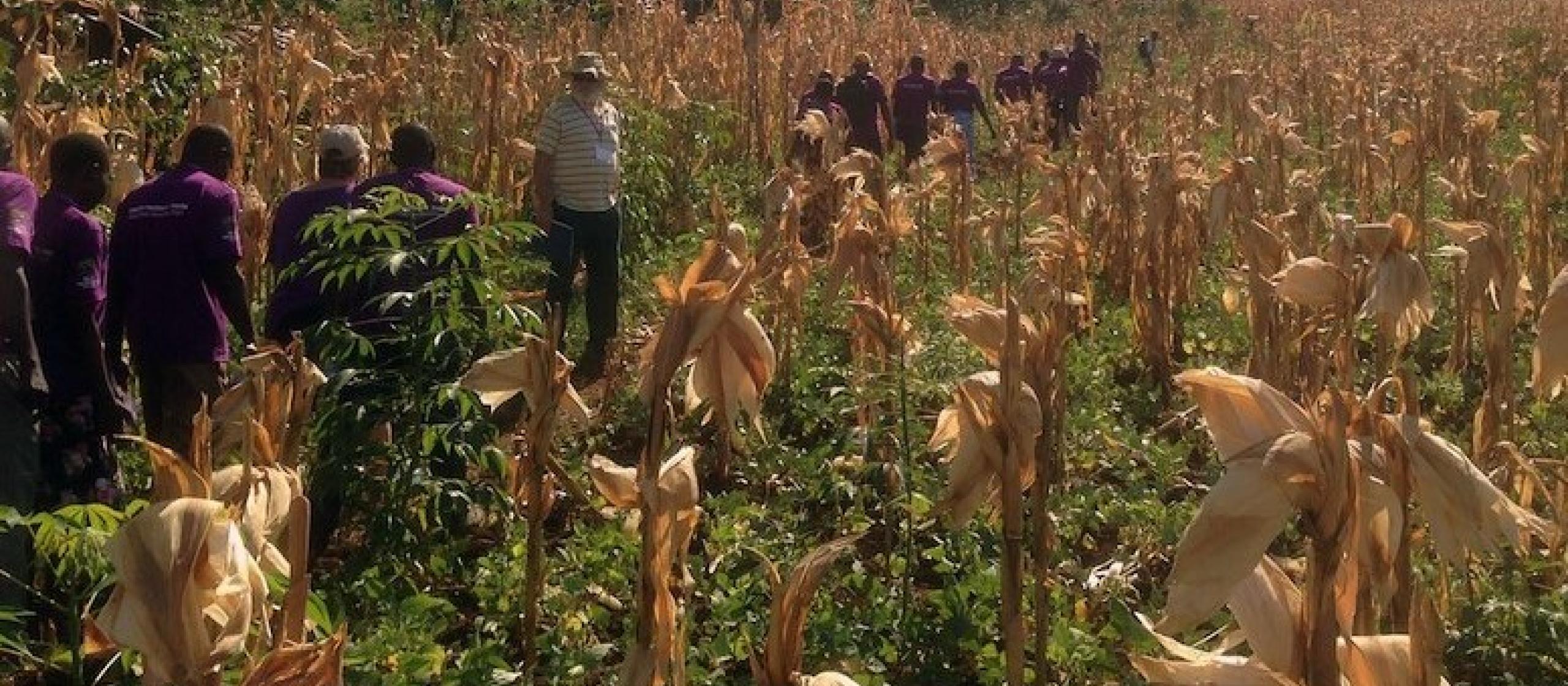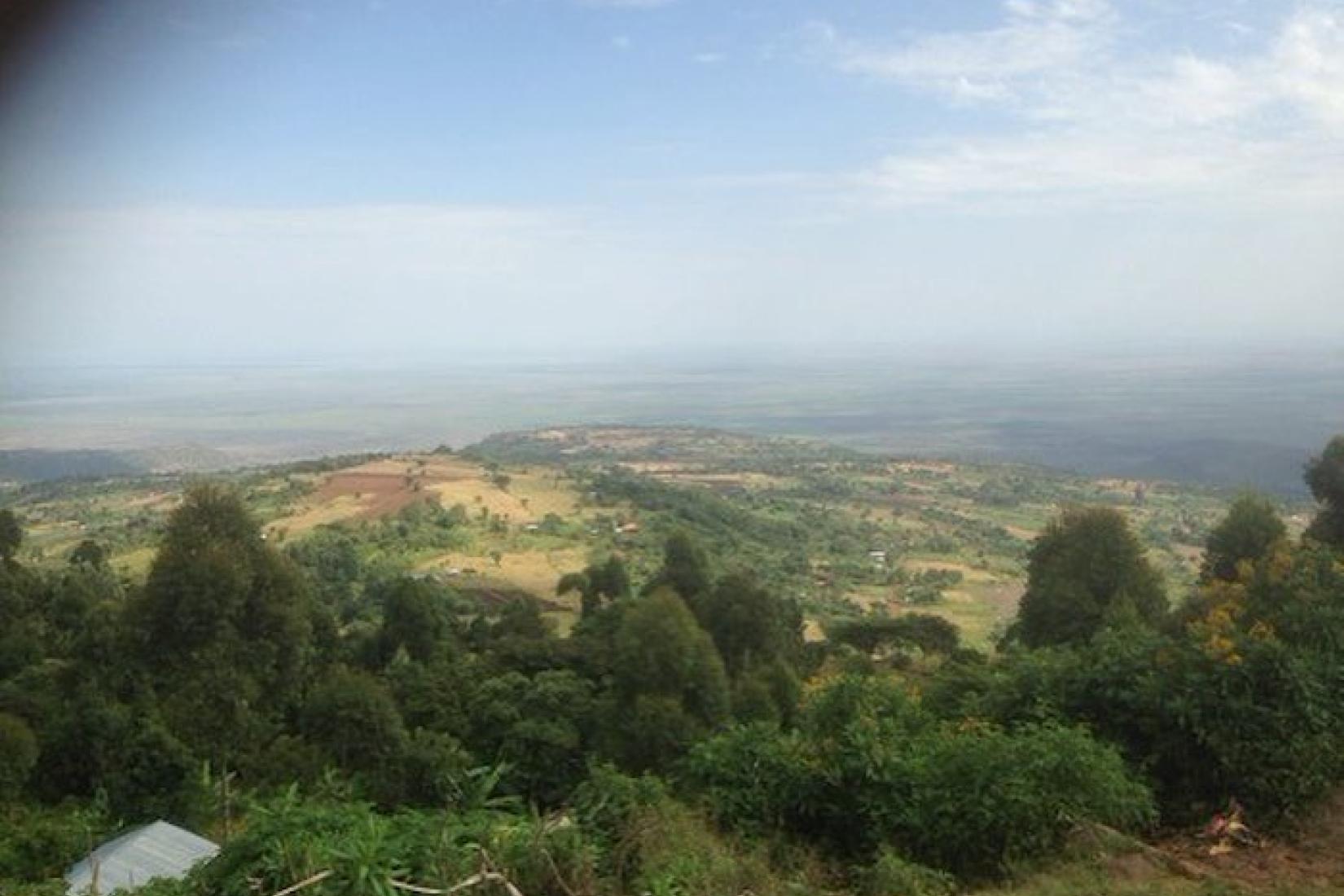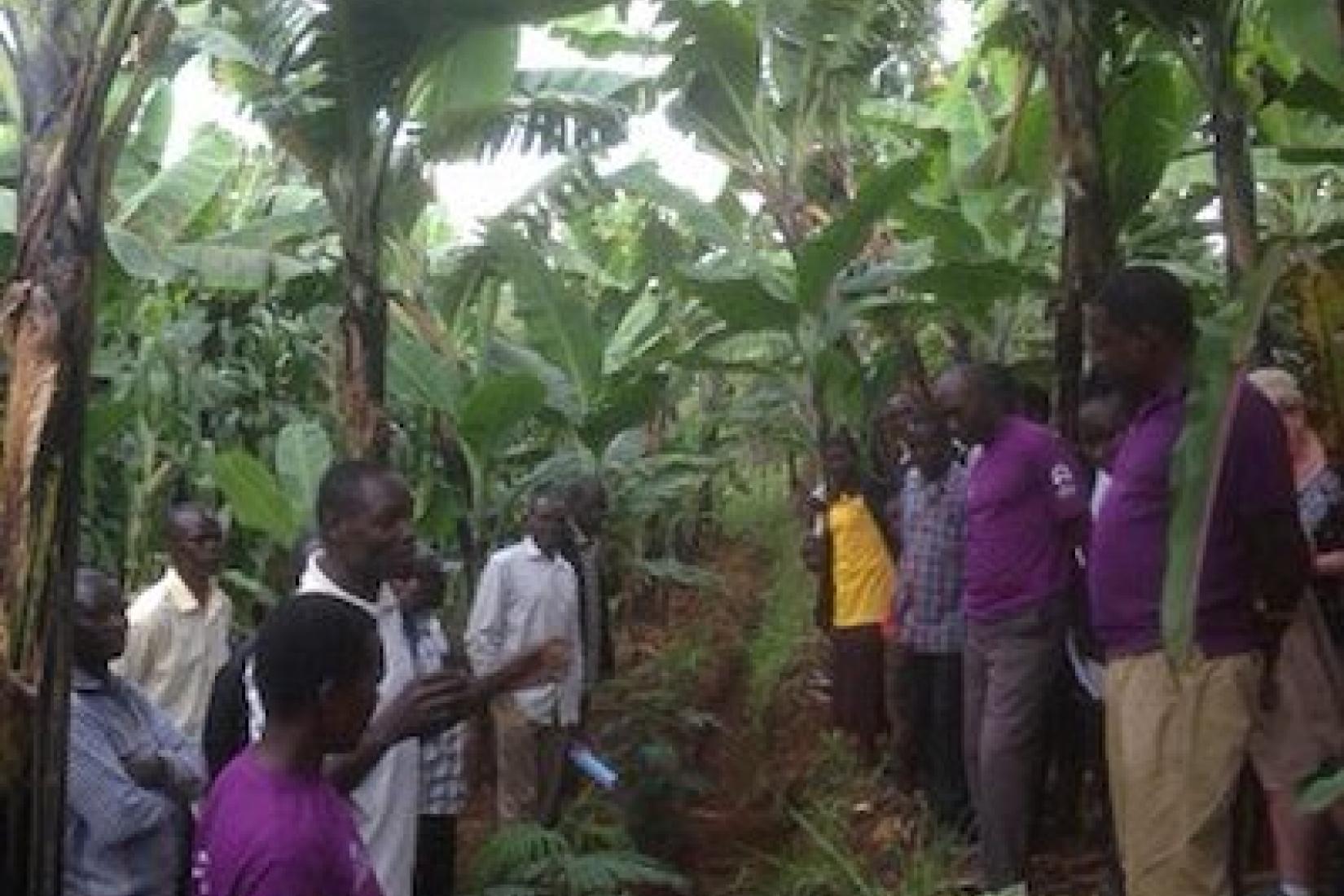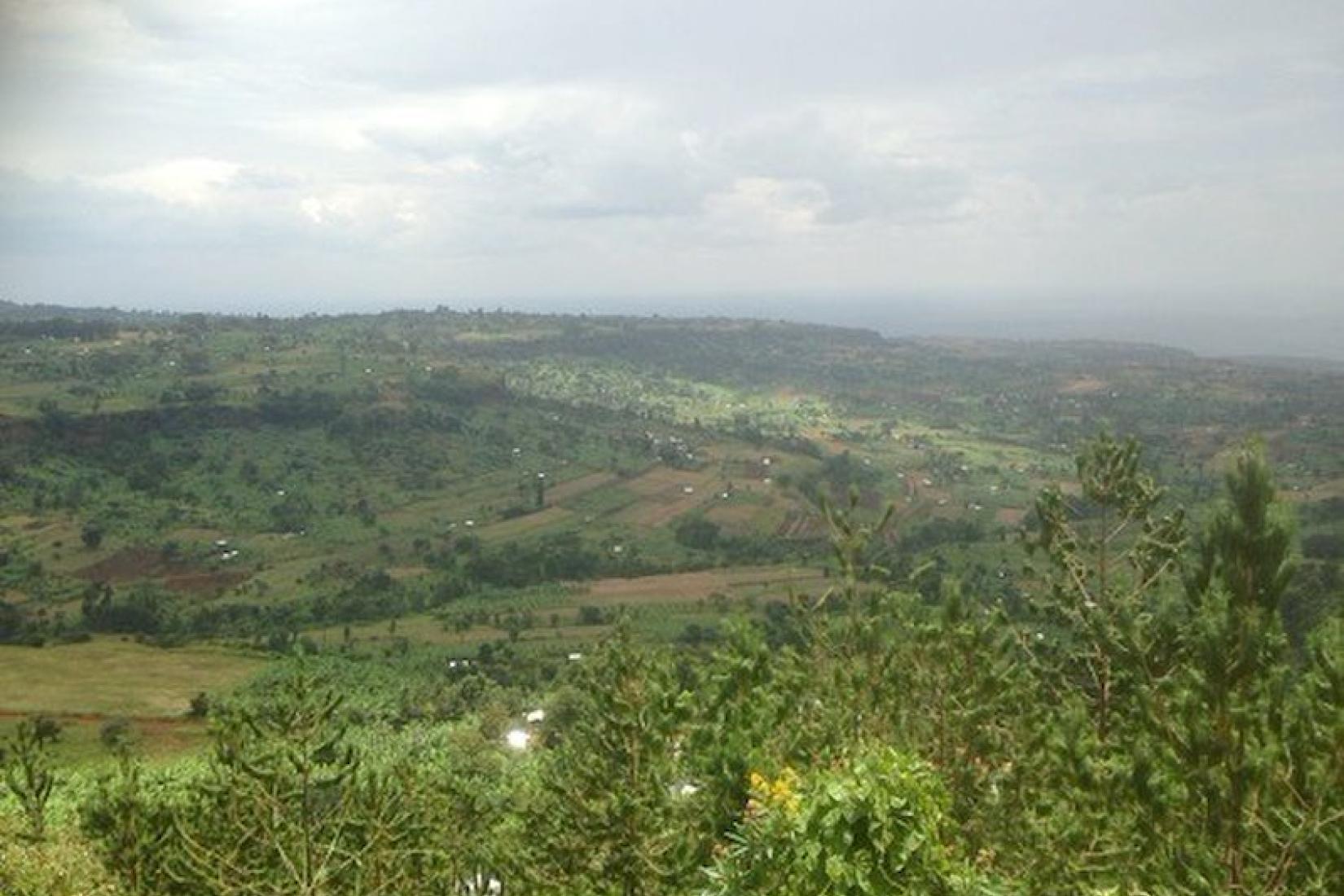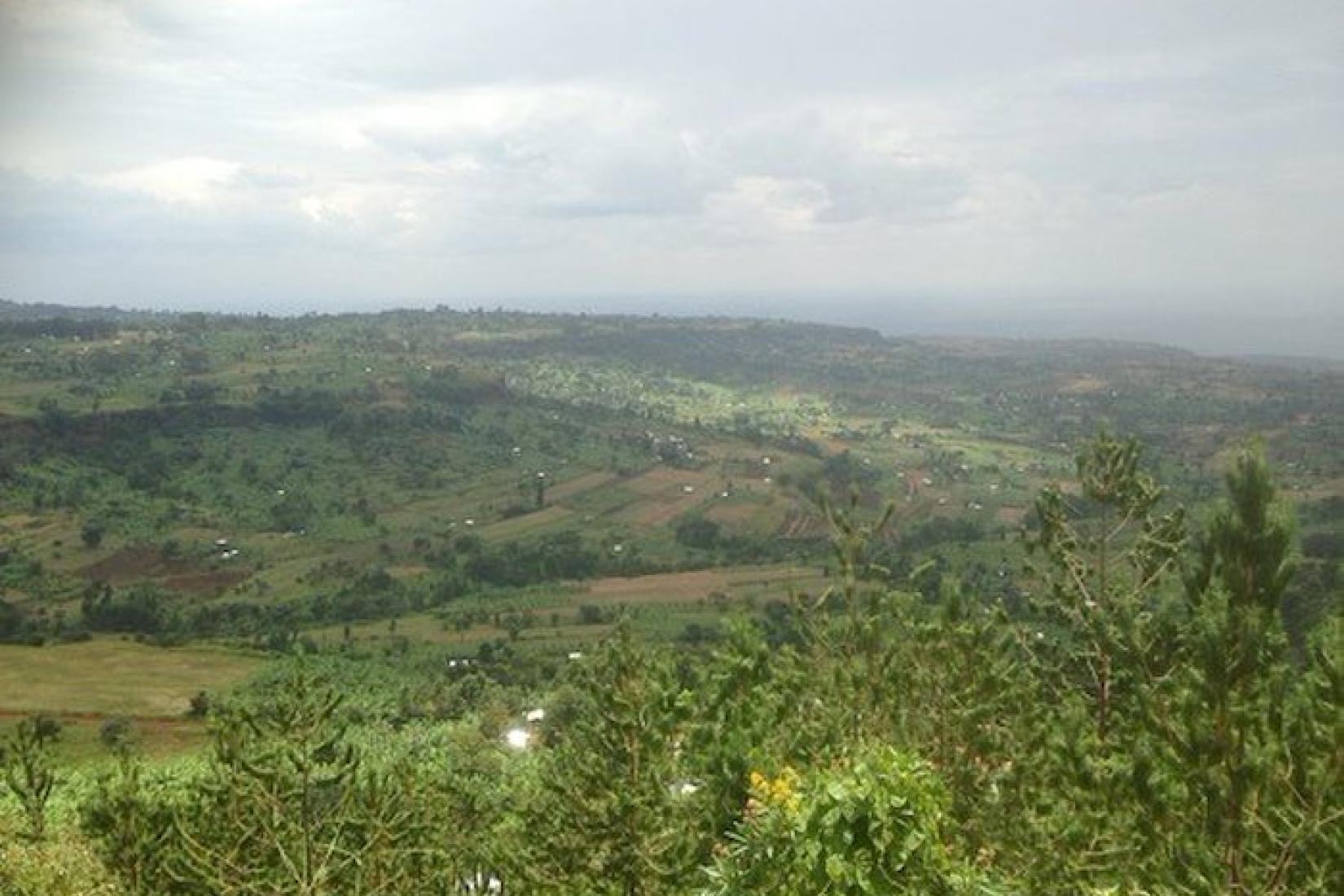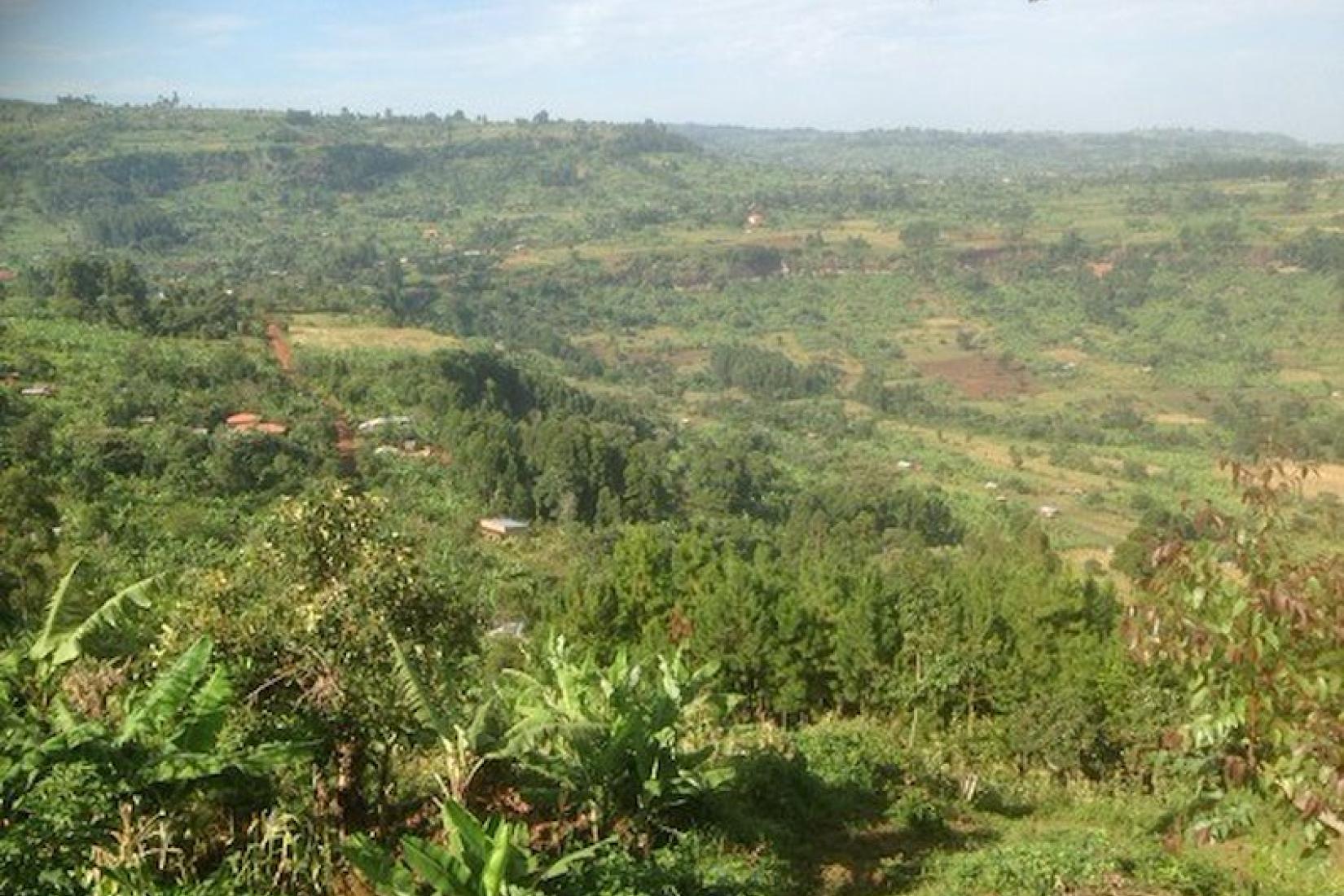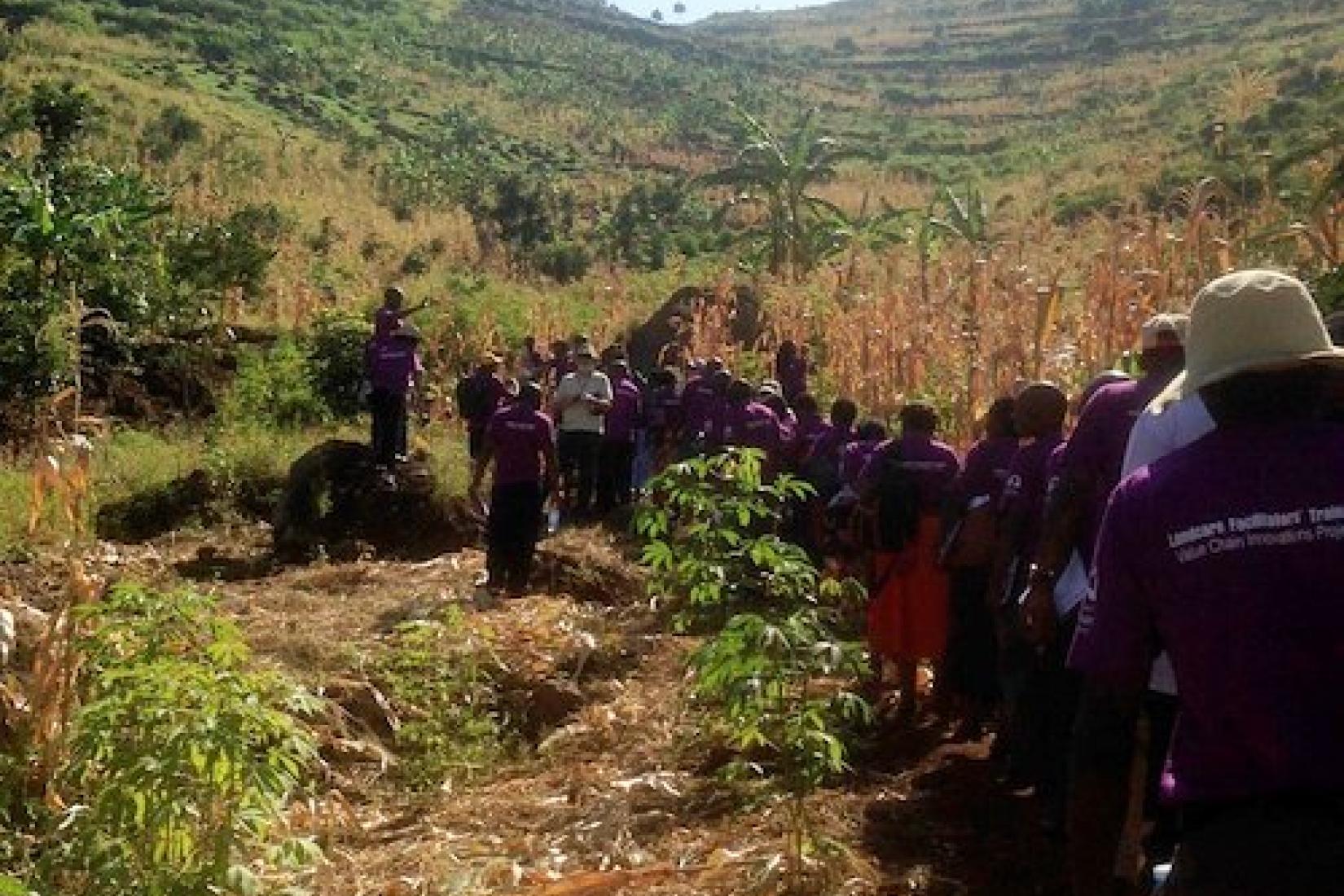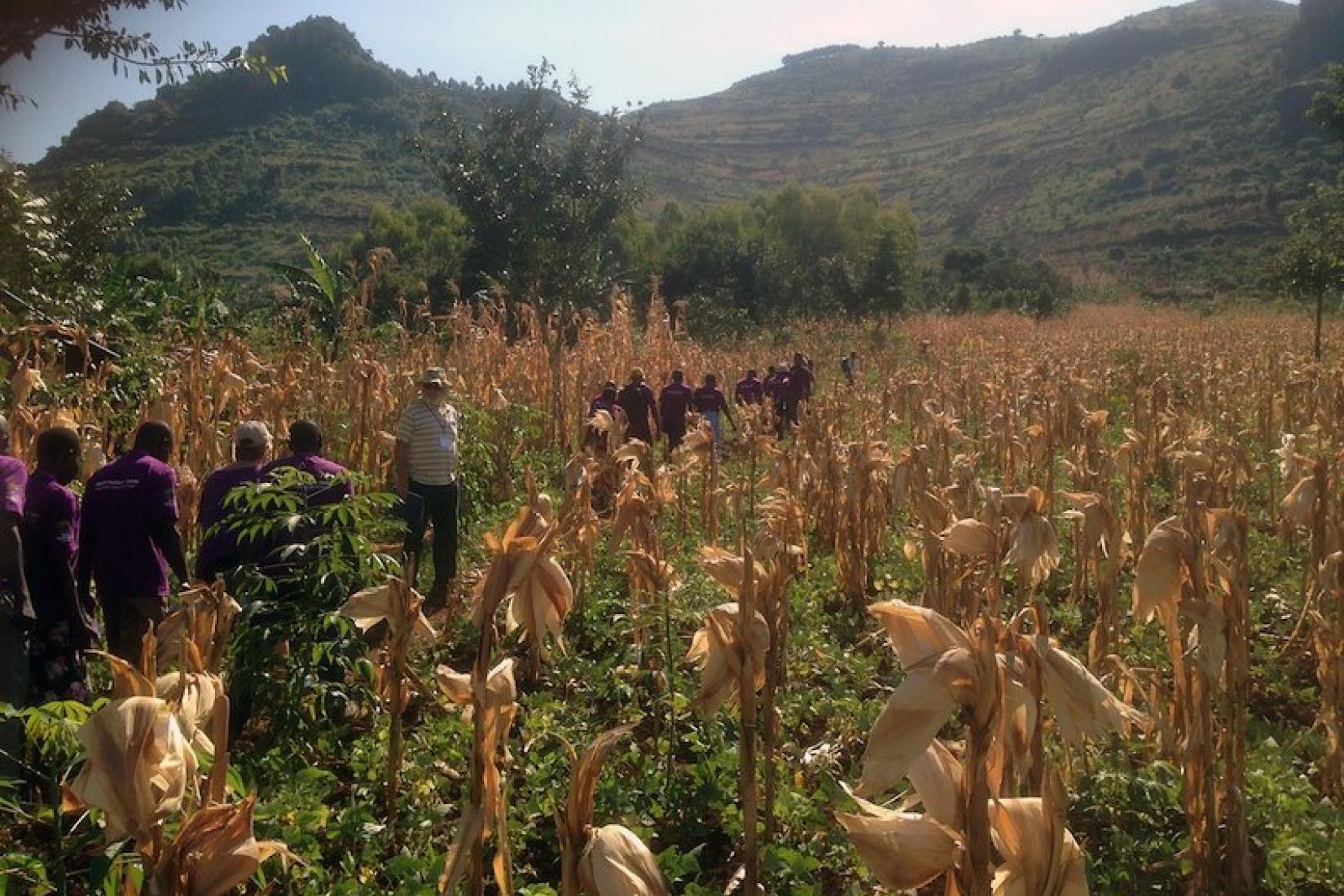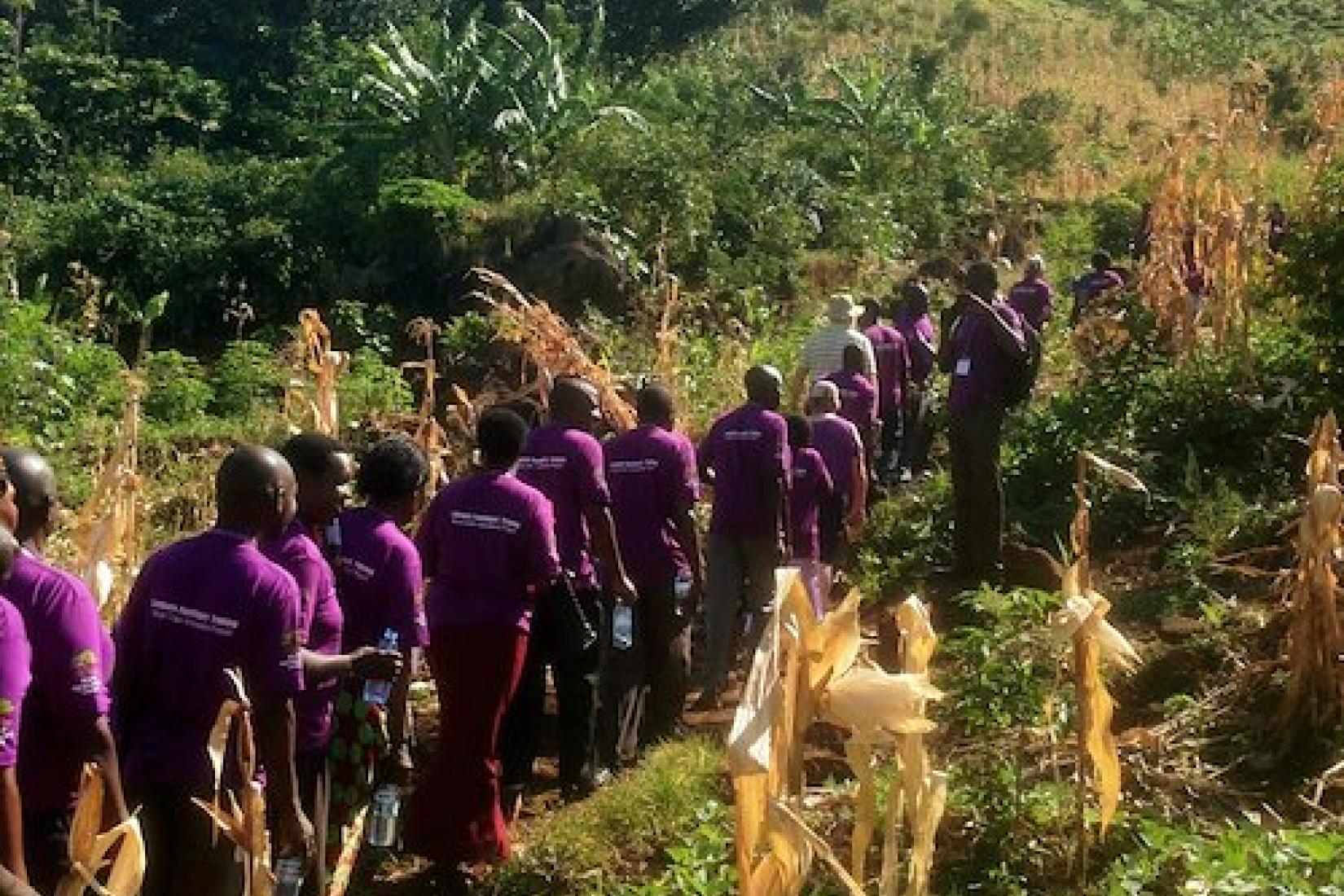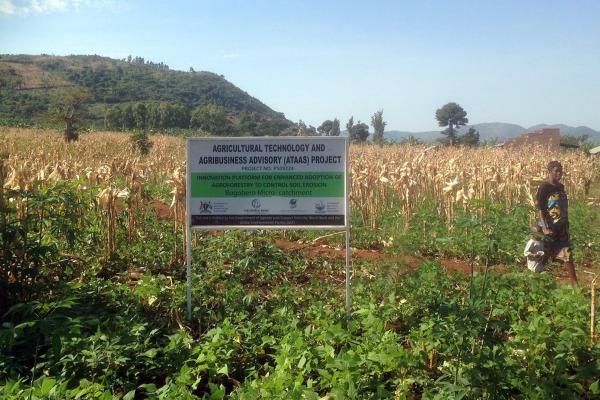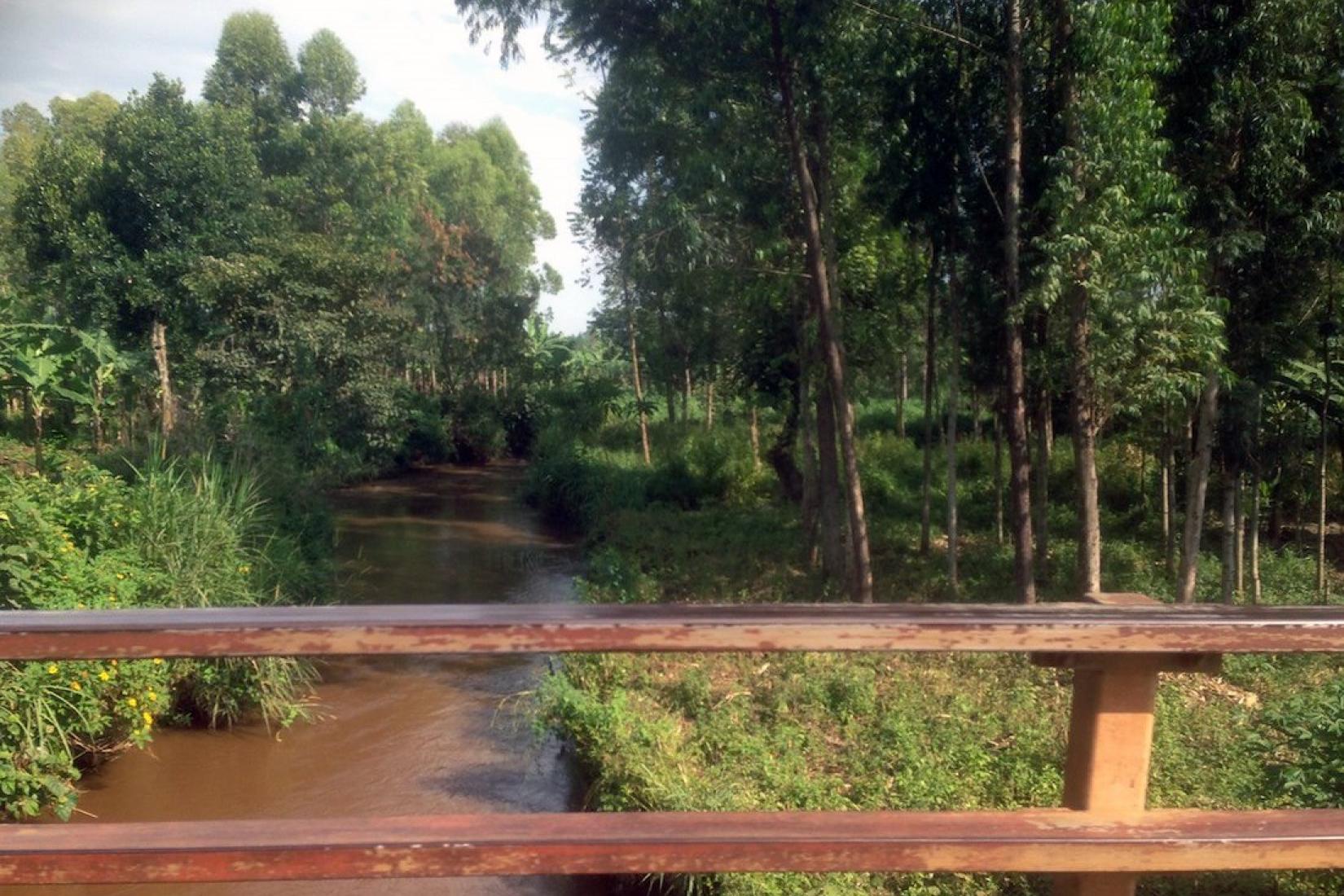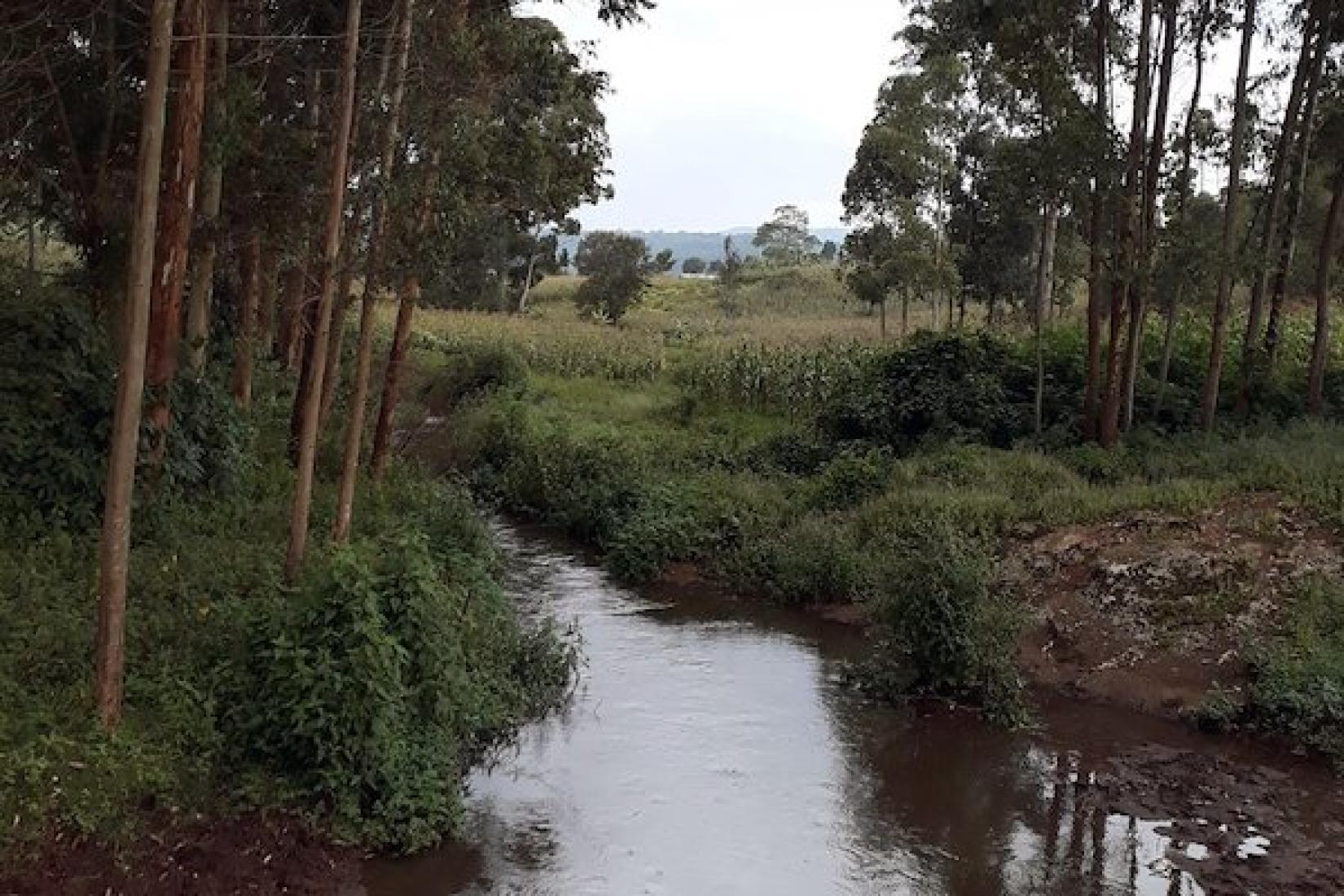In Tegeres village Kapchorwa district, the community danced and sang to welcome us. They showed us examples of how landcare practices are changing their farms and lives, by walking the visiting group through their farms to see:
- Filter strips of bamboo planted for commercial harvest on the steep erodible banks of the headwater streams flowing to the Nile. The bamboo buffers improve water quality and will reduce pressure on the groves in the Mt. Elgon national park further upstream. (MT Elgon is one of the ‘water tower’ catchments for the Nile at 4,321 metres)
- Eucalyptus woodlots for providing building materials, firewood and income
- The use of soil stabilisation techniques including mulching, contour trenches and banks to enhance water infiltration and reduce soil erosion
The landcare practices are an intrinsic part of and complement the value chain and trees for food security projects currently funded by ACIAR. The value chain project is exploring ways to increase incomes for farmers. Options for lifting returns and improving livelihoods include:
- Dairy faming enterprises using zero-grazing dairy units where milking cows are fed crop waste, grasses and agroforestry legume fodder shrubs using a ‘cut and carry’ system, where the waste is exploited for biogas and fertiliser;
- The coffee innovation platform is improving quality and yields and value adding through dedicated marketing of organic, locally branded coffee;
- Honey enterprises that use bee houses to attract hives that forage the adjoining national park and farm lands.
After touring their farms and gardens to see many impressive efforts to build better, more productive and sustainable systems, the farmers put on excellent street theatre to communicate clearly their stories. The drama focused on the importance of soil conservation, and agroforestry. In the best amateur theatre style, they showed us how the training in soil conservation and agroforestry had improved their lands and lives, and enabled them to hand the land to future generations in better shape.
INNOVATIVE POLICIES FOR NATURAL RESOURCES GOVERNANCE
The communities are engaged and active, looking to adopt further suitable innovations. Their dramas demonstrated a clear story about how they have come from a situation of poverty, degrading their lands with erosion and loss of fertility, to one of improved conditions and increasing prosperity. The combined potential of the landcare networks and the value chain work is enormous.
The communities have developed some innovative policies for natural resources governance. They have developed and applied bylaws to restrict free grazing so that the revegetation and crops can be protected from goats and cows and to protect water sources. In Tegeres village, where they adjoin the national park, they have also signed a community conservation agreement with the Uganda Wildlife Authority which makes the community adjoining the national park its guardian and custodians. They retain some limited harvesting rights for firewood and non-timber resources like mushrooms, bamboo shoots and herbs, but work to protect it from encroachment and poachers. The community is paid a small fee that is recognised as benefit sharing. This is mostly used for community enhancement activities.
